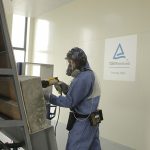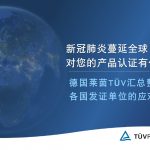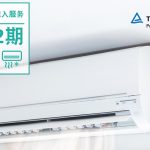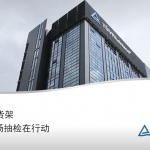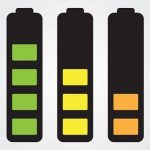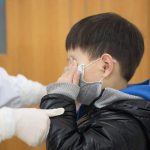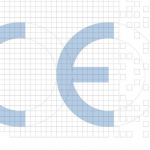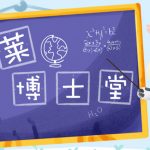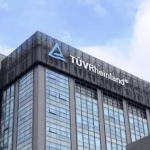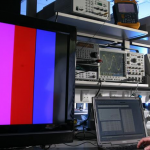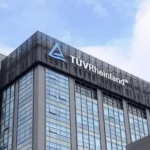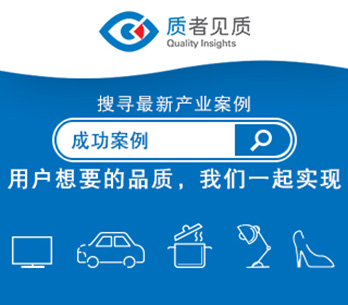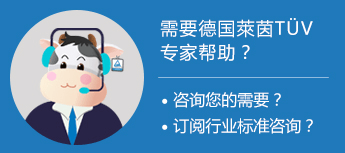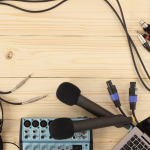2022年2月国际市场准入资讯更新
- 第423 号法案: 更新与评估受限辐射无线电通信设备的技术要求相关的第14448 号法案,并包括巴西允许使用的新设备
- 第237 号法案: 撤销法案6506 并更新限制辐射无线电通信设备的测试程序
- Act 423 – Updates Act 14448 related to the technical requirements for the assessment of restricted radiation radiocommunication devices and includes new devices allowed in Brazil.
- Act 237 – Revokes Act 6506 and updates testing procedures for restricted radiation radiocommunication devices
- Body Scanning Emitter-Sensor for Security Application operating in the 76-81 GHz band;
- Interactive Motion Sensors installed in vehicles operating in the 57-64 GHz band;
- Wireless Multigigabit System operating in the 57-66 GHz band in fixed applications;
- UWB devices operating at 3100-3300 MHz and 3700-10600 MHz installed in vehicles;
- 5150–5350 MHz devices installed inside vehicles and trains.
- WIFI 6E devices according to FCC KDB 789033 D02 (Reference 3.15);
- Emitter-sensor level detection devices operating in the 76-81 GHz band according to ETSI EN 302 729 V2.1.1 (Reference 3.12) and ETSI EN 302 372 V2.1.1 (Reference 3.13);
- Vehicle Communication System devices according to ETSI EN 302 571 V2.1.1 (Reference 3.11);
- Multigigabit Wireless System, operating in the band 57-71 GHz according to ANSI C63.10 (Reference 3.5);
- LBE and FBE devices (Access sharing system) operating in the bands 5,150-5,350 MHz, 5,470-5,725 MHz, and 5,725-5,850 MHz according to ETSI EN 301 893 V2.1.1 (Reference 3.10).
- general purpose lamps
- incandescent, compact fluorescent lamps
- LED
- spotlights
- luminaires recessed into the ground
- circuit breakers
- A 类: 此过程考虑测试并产生由当地认证机构(CB) (如NYCE、T Ü V莱茵等) 颁发的符合性证书 (CoC) 和 IFETEL 颁发的 CoH
- B 类: 此过程由授权的”perito(专家)”通过技术意见进行,并产生由IFETEL 颁发的CoH
- C 类: 此流程适用于同时受A 类和B 类约束的产品。它考虑测试、CoC 和来自授权”perito (专家)”的技术意见,并产生由当地 CB 颁发的 CoC (例如NYCE、ANCE 等) 和 IFETEL 出具的 CoH
- Type A – This process considers testing and results in a Certificate of Conformity (CoC) issued by a local Certification Body (CB) (such as NYCE, TUV Rheinland, etc.) and a CoH issuedby IFETEL.
- Type B – This process is made through Technical Opinion by an authorized “perito” and results in a CoH issued by IFETEL.
- Type C – This process is applicable to products that are subject to both Type A and Type B. It considers testing, CoC, and a Technical Opinion from an authorized “perito” and results in a CoC issued by a local CB (such as NYCE, ANCE, etc.) and a CoH issued by IFETEL.
- with indefinite validity for Type A, Type B, and Type C Approvals. In order for Type B and Type C Approvals to receive indefinite validity, the holder of Type B and/or Type C CoHs must present a Technical Opinion from an authorized “perito” within ninety (90) calendar days prior to the end of two (2) years from the date the CoH was issued, which demonstrates that the Products are operating satisfactorily in their modalities and design applications.
- in a digital format. They may also be re-issued in a digital format with the same technical characteristics and terms originally given. The purpose of re-issuing in a digital format would allow for:
- IEC 60950-1 信息技术设备- 安全 – 第 1 部分:一般要求
- TIS 1561-2013 信息技术设备- 安全:一般要求
- IEC 62368-1 音频/视频、信息和通信技术设备- 第 1 部分:安全要求
- TIS 62368 第1-2563 部分音频/视频、信息和通信技术设备 – 第 1 部分:安全要求
- IEC 60950-1 Information technology equipment – Safety – Part 1: General requirements;
- TIS 1561-2013 Information Technology Equipment – Safety: General Requirements;
- IEC 62368-1 Audio/video, information and communication technology equipment – Part 1: Safety requirements;
- TIS 62368 Part 1-2563 Audio/Video, Information and Communication Technology Equipment – Part 1: Safety Requirements.
- IEC 60335-2-25:2020
- IEC 60335-2-25:2020
- b) Appliances intended for use in places where special conditions prevail, such as the presence of a corrosive or explosive atmosphere (dust, steam or gas).
- c) Wet and dry vacuum cleaners, including electric brush, for commercial and industrial use (IEC 60335-2-69).
- d) Portable electric garden blowers operating from the mains, vacuum blowers (IEC 60335-2-100).
- e) Appliances for medical purposes (IEC 60601-1).
- f) Vacuum cleaners only with USB input port and/or USB connector cable.
- g) Backpack type vacuum cleaners for commercial/industrial use (IEC 60335-2-69).
- h) Portable vehicle vacuum cleaners that are powered or charged only by 12 VDC supply.
- i) Charging or docking stations for automatic cleaners (robot or intelligent vacuum cleaner).
- j) Vacuum cleaners intended to be used for non-domestic (commercial/industrial) purposes in hotels, offices, schools, hospitals and similar premises.
- k) Pool cleaners and glass cleaners.
- SNI 7859-2013, Household and similar electrical appliances – Safety – Part 1: General requirements; and SNI IEC 60335-2-14-2011, Household and similar electrical appliances – Safety – Part 2-14: Particular requirements for kitchen machines; for Electrical Blender, Electrical Juicer, Electrical Mixer and Electrical Food Chopper
- SNI 7859-2013, Household and similar electrical appliances – Safety – Part 1: General requirements; and SNI IEC 60335-2-15-2011, Household and similar electrical appliances – Safety – Part 2-15: Particular requirements for appliances for heating liquids; for Rice Cooker and Electric Kettle
- SNI 7859-2013, Household and similar electrical appliances – Safety – Part 1: General requirements; and SNI IEC 60335-2-74:2010, Household and similar electrical appliances – Safety – Part 2-74: Particular requirements for portable immersion heaters; for Immersion Heaters
- SNI 7859-2013, Household and similar electrical appliances – Safety – Part 1: General requirements; SNI IEC 60335-2-15-2011, Household and similar electrical appliances – Safety – Part 2-15: Particular requirements for appliances for heating liquids; and SNI IEC 60335-2-24-2009, Household and similar electrical appliances – Safety – Part 2-24: Particular requirements for refrigerating appliances, ice-cream appliances and ice-makers; for Water Dispenser
- KC 60335-2-7 家用和类似用途电器安全第2-7部分:洗衣机的特殊要求:
- KC 60335-2-23 家用和类似用途电器-安全第2-23部分:皮肤或头发护理的特殊要求:
- KC 60335-2-80 家用和类似用途电器-安全第2-80部分:风扇的特殊要求:
- KC 60335-2-7 Household and similar electrical appliances – Safety Part 2-7: Particular requirements for washing machines:
- Specification of test items such as temperature rise, abnormal operation, and structure –
- addition of temperature rise standards by surface material and location during normal operation;
- addition of condition for overload operation test;
- relaxation of standards for internal opening force of doors;
- addition of requirements for steam generators.
- KC 60335-2-23 Household and similar electrical appliances – Safety Part 2-23: Particular requirements for skin or hair care:
- Specification of labeling and test items for mechanical hazard and structure, etc –
- correction of errors and addition of requirements for specific products;
- addition of safety tests for equipment used on the floor/table;
- addition of structural requirements for device surface to prevent burns to users.
- KC 60335-2-80 Household and similar electrical appliances – Safety Part 2-80: Particular requirements for fans:
- Specification of labeling and test items for mechanical hazard, etc –
- addition of labeling items for specific products;
- addition of test items related to pinching or injury risk.
- ANSI/ASHARE 37-2009 Methods of testing for rating Unitary air conditioning and heat pump equipment. The American Society of Heating, Refrigerating, and Air-Conditioning Engineers, Inc. 2.
- ARI 210/240- (2017) Performance Rating of Unitary Air-conditioning & Air-source Heat Pump Equipment;
- NOM-023-ENER-2018 Energy efficiency in split air conditioners, free discharge and without air ducts (Mexican standard).
- be attached to the device or affixed by means of a sticker;
- be affixed in a visible manner on the surface of the product;
- contain, in legible and indelible form, in “Arial” font, the minimum information listed in section 11.3 of this Regulation;
- comply with the dimension requirements as specified under section 11.4.
- casement and window type air-conditioners,
- split type (non-inverter) air-conditioners with one indoor unit ,
- split type (non-inverter) air-conditioners with more than one indoor unit,
- split type (inverter) air-conditioners with one indoor unit,
- split type (inverter) air-conditioners with more than one indoor unit,
- refrigerators without freezers, with freezers and with through the door ice dispenser,
- clothes dryers.
- 建筑/建筑产品
- 时钟
- 化妆品
- 电气和电子设备(缩写: EEE)
- 家具
- 信息和通信技术(ICT) 设备
- 机械产品
- 测量仪器
- 医疗设备
- 个人护理用品
- 个人防护装备(PPE)
- 体育器材
- 电信设备
- 玩具/儿童保育产品
- Building / Construction Products;
- Clocks;
- Cosmetics;
- Electrical and Electronic Equipment (Abrv: EEE);
- Furniture;
- Information and Communications Technology (ICT) Equipment;
- Machinery Products;
- Measuring Instruments;
- Medical Devices;
- Personal Care Appliances;
- Personal Protective Equipment (PPE);
- Sports Equipment;
- Telecommunications Equipment and;
- Toys / Childcare Products

 |
 |
资讯 / 电信 ITE / Telecom
Brazil 巴西
ANATEL 发布两个新法案:
ANATEL published two new Acts as described below (see annex translated version):
The main changes below:
Act 423/2022:
Includes technical requirements for:
Changes the following technical requirements.
|
BEFORE UPDATE |
AFTER UPDATE |
|
5GHz devices (B1/B2) |
5GHz devices (B1/B2) |
|
N/A |
5GHz Vehicle devices (B1/B2) 5GHz Train devices (B1/B2) |
|
Allowed frequency for UWB devices |
Allowed frequency for UWB devices (*) (*) Update made so that UWB devices do not interfere with 5G NR devices operating in the n78 band |
|
Wireless Multigigabit System operating in the 57-71 GHz band must meet the following requirements, in accordance with the items of ITU-R Recommendation M.2003-2 |
Wireless Multigigabit System operating in the 57-71 GHz band in indoor or outdoor applications (Point-to-multipoint) must meet the following requirements: |
Act 237/2022:
Revokes Act 6506 (testing method/procedures)
Inclusion of test procedures for:
Brazil 巴西
2021 年 12 月 21 日,巴西国家计量、标准化和工业质量研究所 (INMETRO/CONMETRO) 发布批准低压电气设备技术法规的第497号协议。 该技术法规适用于电压最高达 1 kV、标称电流最高达 63A 的电气装置中使用的电气设备,并规定有关产品标记和铭文的安全性和一致性的要求。 该协议于 2022 年 1 月 3 日生效。
On 21 December 2021, the Brazil National Institute of Metrology, Standardization and Industrial Quality (INMETRO/CONMETRO) published Portaria No. 497 approving the Technical Regulation for Low Voltage Electrical Devices.
This Technical Regulation establishes the requirements regarding safety and conformity of the product’s markings and inscriptions.
It applies to electrical devices used in electrical installations of voltage up to 1 kV with nominal current up to 63A.
The Regulation sets out the marking and instructions requirements. Low voltage electrical devices must contain the mandatory information set out in Table 1, in Portuguese, on the body of the product.
In addition, the packaging must contain, besides the mandatory information required for each product, in an easily visible place, and in a clear, indelible and permanent way, the company name, address, National Register of Legal Entities – CNPJ or Individual Register – CPF of the supplier or assembler.
This Portaria will enter into force on 3 January 2022 and will repeal Portarias No. 335/2011 and 107/2012.
EAEU 欧亚经济联盟
2021 年 12 月 28 日,欧亚经济委员会通过第 197 号决定,修改了要求报关单附有证明符合关税同盟《低压设备技术法规》(TR CU 004/2011) 与电磁兼容性 (TR 020/2011) 要求的文件的产品列表。
该决定将新的 TN VED EAEU 代码 (对外经济活动命名法) 添加到 EAEU 产品列表中,并替换了许多产品的一些现有代码,包括: 通用灯具、白炽灯、紧凑型荧光灯、LED、聚光灯、嵌入地面灯具、断路器。
第 197 号决定自 2022 年 1 月 29 日起生效,适用于自 2022 年 1 月 1 日起产生的法律关系。
On 28 December 2021, the Eurasian Economic Commission adopted Decision No. 197 to amend the list of products requiring customs declarations to be accompanied by documents certifying conformity with the requirements of Customs Union’s Technical Regulations on Low Voltage Equipment (TR CU 004/2011) and Electromagnetic Compatibility (TR 020/2011).
The Decision adds new TN VED EAEU codes (Nomenclature of Foreign Economic Activity) to the EAEU list of products, and replaces some existing codes for a number of products including:
Decision No. 197 shall enter into force on 29 January 2022. It applies to legal relations arising from January 1, 2022.
India 印度
从 2021 年 12 月 13 日起,印度WPC 将 Sub GHz 频率范围从 865-867MHz 增加到 865-868MHz。 短程设备,如计量设备、传感器数据采集设备; 在 865-868MHz 频段运行的无线监控和通信设备免于许可证要求。 这些设备可以通过获得基于 ETSI EN 300 220 的设备型式批准投放到印度市场。
另外,从 2021 年 12 月 21 日起,印度WPC 将免除在 9KHz 至 30MHz 频段运行的设备对感应应用的许可要求。 通过获得基于 ETSI EN 300 330 的设备类型批准,NFC、RFID、汽车防盗器、无线充电器等设备可以投放印度市场。
Sub GHz frequency range has been increased from 865-867MHz to 865-868MHz with effect from 13th Dec 2021 by Wireless Planning and Coordination (WPC), India. Short Range Devices such as metering devices, Sensors Data acquisition devices; Wireless monitoring and communication devices operating in frequency band 865-868MHz are exempted from licence requirements. These devices can be placed in Indian market by obtaining Equipment Type Approval based on ETSI EN 300 220.
Devices operating in frequency band 9KHz to 30MHz are exempted from license requirements for inductive applications with effect from 21st Dec 2021 by Wireless Planning and Coordination (WPC), India. Devices such as NFC, RFID, car immobilisers, wireless chargers can be placed in Indian market by obtaining Equipment Type Approval based on ETSI EN 300 330.
Jordan 约旦
约旦TRC修正部分短距离无线通信技术规范。
TRC近期对短距离无线通信技术规范发布修正,其中特别是WiFi 5G/6G的使用频段及输出功率限制值,整理如下表:
Jordan’s New Revision of Short-Range Device License
For now, the SRD License Document contains special requirements to 5GHz/6GHz wireless access systems (WAS) including RLAN equipment. Please, take a look at the table below to see detailed specifications for any particular frequency band.
|
Frequency band, MHz |
Transmit power limit/ field strength limit/ power density limit |
Other usage restrictions |
Applicable Standards/Decisions |
|
5150-5350 |
23 dBm e.i.r.p (with TPC) |
5150-5250 MHz |
EN 301 893 |
|
5470-5725 |
30 dBm e.i.r.p (with TPC) |
For indoor use only. |
EN 301 893 |
|
5725-5875 |
23 dBm e.i.r.p |
For indoor use only |
– |
|
5925-6425 |
Maximum mean e.i.r.p 23 dBm e.i.r.p |
For indoor use only |
ECC Decision 20 (01) |
|
Maximum mean e.i.r.p 14 dBm e.i.r.p |
For portable devices which can operate indoor and outdoor |
Malaysia 马来西亚
马来西亚MCMC – 更新等级划分及开放WiFi 6E
Malaysia MCMC – New Class Assignment and Wifi 6E
MCMC just issued the latest Class assignment CA-No-1-of-2022.
Main changes of this Class assignment is open up Wifi 6E(5925MHz – 6425MHz)for certifications.
https://www.mcmc.gov.my/skmmgovmy/media/General/CA-No-1-of-2022_-signed_19012022.pdf
Mexico 墨西哥
IFETEL 于 2021 年 12 月 29 日发布了新的认证指南。根据这些新指南,有以下类型的认证批准程序:
IFETEL published new Homologation Guidelines on December 29, 2021.
Under these new Guidelines are the following Types of Homologation Approval Processes:
CoCs and CoHs will be issued:
▪ Modification of the information regarding Legal Representatives and/or tax address;
▪ Adding or removing affiliates, subsidiaries, or importers declared in the CoH or CoC; and/or
▪ Adding or eliminating HTS codes and/or countries of origin and shipment.
Singapore 新加坡
UEN 编号已从 2021 年 12 月 1 日起取代新加坡消费者保护 (安全要求) 注册计划或 CPS 计划的 RS 代码。
Singapore Enterprise had announce in change of registered suppliers information: UEN number is replacing RS code from December 1, 2021 for Singapore Consumer Protection (Safety Requirements) Registration Scheme or CPS Scheme.
Consumer Protection Safety Office (CPSO) has updated the existing CPSA system, which is the online system for registration of Controlled Goods (CGs), and hosting of information on registered CGs, including the following databases:
Register of Registered Suppliers (RS)
Register of Registered Controlled Goods.
The new/ updated system is known as CPSA+, and there is one major change for RS information in CPSA+ system: Removal of unique three-character RS code
RSes will no longer be identified by their unique three-character RS code and will instead be identified by company UEN, which is likewise unique to each RS. Certain processes will be affected by this change:
The three-character RS code can no longer be used as the username to log into your RS account
As the three-character RS code will no longer used to identify RS in the new system, CABs may instead require RSes to provide their UEN number during registration/renewal of Controlled Goods.
It is no longer mandatory to display the three-character RS code on the CoC. Displaying the RS code will be up to the CAB’s discretion.
UEN number needs to be provided instead of RS code for application from December 1, 2021.
(RS: Registered Suppliers)
South Korea 韩国
2021 年 12 月 23 日,韩国无线电研究机构发布了对《广播和电信设备合格评定通知》的修订,
简化某些设备的合格评定豁免程序和临时认证程序。 该修正案规定,与先前通过临时合格评定程序认证的设备相同的设备,应免于临时审查委员会的审查。处理临时认证申请的期限由60天缩短至30天。此外,如果在临时认证过程中需要进行专业技术审查,无线电研究机构可以将审查期限延长至最长 15 天 (而不是 30 天)。为维护和维修认证设备而制造或进口的相同部件,在清关时无需额外的豁免程序即可清关。
该通知于2021年12月23日生效。
On 23 December 2021, the South Korean Radio Research Agency issued an amendment to the Notice on Conformity Assessment of Broadcasting and Telecommunications Equipment. The amendment was issued to simplify the exemption procedure of conformity assessment for certain equipment and the process of interim certification.
The amendment provides that equipment which are identical to those previously certified under the interim conformity assessment procedure shall be exempt from review by the provisional examination committee. The period for processing applications for interim certification is shortened from 60 days to 30 days. Also, the Radio Research Agency may extend the review period to a maximum of 15 days (as opposed to 30 days) if professional technical review is necessary during the interim certification process.
The amendment further prescribes that identical components which are manufactured or imported for the maintenance and repair of certified equipment shall be cleared without additional exemption procedure at the time of customs clearance. It must be established in advance that the components are intended for the maintenance and repair of a certified equipment.
The Notice entered into force on 23 December 2021.
South Korea 韩国
2021 年 11 月 29 日,韩国无线电研究机构 (RRA) 发布了对《关于电磁场强度测量方法的通知》的修订。修订的目的是提高电磁波强度的测量标准,以适应无线电台和家用电器的实际运行、运行环境和测量设备条件。
该通知于2022年1月1日生效。
On 29 November 2021, the South Korean Radio Research Agency (RRA) issued an amendment to the Notice on Measurement Method for Electromagnetic Field Intensity.
The amendment was issued to improve measurement standards of electromagnetic wave intensity to meet the actual operation, operating environment and measuring equipment conditions of radio stations and domestic appliances.
Specifically, the amendment adds the cooking vessel and operating conditions for measuring the electromagnetic wave intensity for inductive kitchen heating appliances in Annex 2 on magnetic field measurement methods for home appliances and similar devices.
The document also amends the measurement method of electromagnetic wave intensity of radio stations by improving the measurement interval and time as well as measurement methods and conversion factor, according to the environment and conditions of the actual installed and operated base station in Annex 1.
Furthermore, the amendment corrects some phrases and relaxes certain regulatory conditions, in Annex 3 on measurement methods of electromagnetic wave intensity of radio station with RF pulse type signal, Annex 4 on power density measurement methods for portable (transmission) wireless equipment used over 6GHz, and related forms of the Annexes.
The Notice entered into force on 1 January 2022.
Thailand 泰国
制定用于语音和/或数据通信 (数码) 的 VHF/UHF 频段陆地移动服务无线电通信设备的 NBTC TS 1024-2564标准,通知: B.E. 2564, 2021。
本通知由泰国国家广播和电信委员会办公室 (NBTC) 于 2021 年 12 月 20 日发布,制定了新的 NBTC 技术标准 1024-2021(BE2564)。该标准提供了用于陆地移动业务的无线电通信设备的技术特性,用于 30-960 MHz 的数据和/或数字化语音通信,信道间隔为 6.25 kHz 和/或 12.5 kHz。这些设备可用于基站、移动站和手持站。 上述设备必须符合下列电气安全标准之一:
本通知于 2021 年 12 月 21 日生效,并废止 2018 年 12 月 6 日的 NBTC 技术标准 1024-2561。
Establishment of NBTC TS 1024-2564 for Radiocommunication Equipment Used in Land Mobile Service in VHF/UHF Bands for Speech and/or Data Communication (Digital), Notification, B.E. 2564, 2021
Issued on 20 December 2021 by the Thailand Office of the National Broadcasting and Telecommunications Commission (NBTC), this Notification establishes new NBTC Technical Standards 1024-2021(B.E.2564) on Radiocommunication Equipment Used in Land Mobile Service in VHF/UHF Bands for Speech and/or Data Communication (Digital).
The Standard provides technical characteristics for radio communication equipment used in the land mobile service for for data and/or digitised speech communications in 30-960 MHz with channel spacing of 6.25 kHz and/or 12.5 kHz. These equipment may be used for base station, mobile station and hand portable station.
The said devices must comply with one of the following standards regarding electrical safety:
Applicable equipment also must demonstrate compliance with requirements of the standard.
This Notice entered into force on 21 December 2021, and repeals the NBTC Technical Standard 1024-2561 dated 6 December 2018.
Ukraine 乌克兰
2021 年 12 月 24 日,乌克兰国家特殊通信和信息保护局发布第 769 号命令,批准了计算 703 – 733 和 758 – 788 MHz 频段无线电设备电磁兼容性的方法。 该方法适用于特殊用户的无线电设备和 703-733 和 758-788 MHz 无线电频段的移动通信设备。 该命令于 2021 年 12 月 29 日生效。
On 24 December 2021, the State Service of Special Communications and Information Protection of Ukraine issued Order No. 769 approving the methodology for calculating the electromagnetic compatibility of radio equipment in the frequency Bands 703 – 733 and 758 – 788 MHz.
The methodology applies to radio equipment for special users and mobile communication equipment in the 703-733 and 758-788 MHz Radio Frequency Bands.
This Order came into force on 29 December 2021.
RoHS/REACH
EAEU 欧亚经济联盟
2021 年 12 月 21 日,欧亚经济委员会通过第 180 号决定,修改了海关申报时必须附有 RoHS 符合性评估文件的产品列表。第 180 号决定于 2022 年 1 月 23 日生效。
On 21 December 2021, the Eurasian Economic Commission adopted Decision No. 180 to amend list of products in respect of which a customs declaration must be accompanied by a RoHS conformity assessment document.
The aim is to add new TN VED EAEU codes (Nomenclature of Foreign Economic Activity) to the EAEU list of products, and the replacement of some existing codes.
The updated lists of products relates to EAEU TR 037/2016 on restriction of the use of hazardous substances in electrical and electronic equipment.
Decision No. 180 enters into force on 23 January 2022.
https://docs.cntd.ru/document/727665341
家用电器 House Appliances
Chile 智利
2021 年 12 月 10 日,智利 SEC 发布了第 9876 号决议,批准关于电动微波炉测试和认证的安全协议 PE:1/18:2021。 根据决议,为了获得认证,电烤箱必须符合以下国际标准;
自 2022 年 11 月 30 日起,国内的电微波炉制造商、进口商和销售商必须持有相应的批准证书。在 PE No. 1/18: 2021协议适用日期之前按照 PE No. 1/18:2007认证的批次产品,可以在国内销售,售完即止。
On 10 December 2021, the Chilean SEC issued Resolution No. 9876 approving Protocol PE: 1/18:2021 on the safety protocol for testing and certification of electric microwave ovens. According to the Resolution, for the purpose of certification, electric ovens must conform to the following international standard;
National manufacturers, importers and marketers of electric microwave ovens must have the respective certificates of approval starting from 30 November 2022. Batches of products that were certified in accordance with PE No. 1/18:2007 before the date of application of protocol PE No. 1/18: 2021, may be marketed in the country while supplies last.
Manufacturers and importers interested in using protocol PE No. 1/18:2021, before its entry into force, may do so when there are Certification Bodies authorised for such purposes.
Protocol PE: 1/18:2021 will apply from 30 November 2022.
Chile 智利
2021 年 12 月 2 日,智利电力和燃料监管局 (SEC) 发布了第 9712 号决议,批准了关于真空吸尘器的第 1/01:2021 号议定书。生效日期为 2022 年 12 月 31 日。
使用的标准是 IEC 60335-2-2:2019-05; IEC 60335-1:2016-05 Ed.5.2 (IEC 60335-1:2010+AMD1:2013+AMD2:2016),并且根据 CEI 23-50 或 CEI 23-34 (EN 50075) 检查插头的尺寸。
On December 2, 2021, the Chilean Superintendency of Electricity and Fuels (SEC) published Resolution No. 9712 approving Protocol PE No. 1/01:2021, concerning to Vacuum cleaners. The entry in force is 31.12.2022.
The standards to use are IEC 60335-2-2:2019-05; IEC 60335-1:2016-05 Ed.5.2 (IEC 60335-1: 2010+AMD1:2013+AMD2:2016); Dimension check of plug according to CEI 23-50 or CEI 23-34 (EN 50075).
This protocol include the following inclusions and/or exceptions:
Applies also to:
1) Vacuum cleaners for animal grooming. (vacuum cleaners for animal grooming)
2) Centrally-sited vacuum cleaners (vacuum cleaners for central vacuum unit).
3) Automatic cleaners (robot or intelligent vacuum cleaners) powered by internal or removable batteries. (automatic battery-operated cleaners).
4) Motorized cleaning heads and current-carrying hoses associated with a particular vacuum cleaner. (motorized cleaning heads), (current-carrying hoses associated with a particular vacuum cleaner).
5) Battery-operated vacuum cleaners and other DC-supplied vacuum cleaners (e.g., from external, non-dc sources). (e.g. with external sources not included). (Battery-operated appliances and other DC supplied appliances.)
6) Dual supply appliances, either mains or internal or removable batteries. (Dual supply appliances)
7) Ash vacuum cleaners. (ash vacuum cleaners)
8) Vacuum cleaners with USB output port.
9) Vacuum cleaners with USB input port with corresponding charger or source (220V or other voltage or range).
Not applicable to:
(a) Cleaning appliances intended to be used exclusively for industrial purposes (IEC 60335-2-69), of voltages above 250 V; or power greater than 3000 W; or capacity greater than 15 liters.
Indonesia 印度尼西亚
第 58/2020 号条例: 强制执行印度尼西亚家用厨房机械和加热液体器具国家标准,已于 2021 年 12 月 23 日生效。 该法令规定,在该国生产或在进口该国、分销和销售的所有用于加热液体以利用家用电力的厨房机器和器具均应满足 SNI 要求。
Mandatory Implementation of Indonesian National Standards for Household Kitchen Machinery and Appliances for Heating Liquids, Regulation No. 58/2020
This decree states that all of Kitchen Machines and Appliances for Heating Liquids for Utilization of Household Electricity produced within the country or imported, distributed and marketed in the country shall fulfil the SNI requirements. The producers which produced these products therefore shall comply with those requirements proven by having Product Certificate for Using SNI Mark.
The product certificate on SNI marking shall be issued by a Product Certification Body which has been accredited by KAN and appointed by the Minister of Industry through testing of the conformity of the products quality against SNI requirements.
Products which are distributed in domestic market that originated domestically and imported shall meet the requirements consisted in:
This Regulation enters into force on 23 December 2021.
South Korea 韩国
2022 年 1 月 6 日,韩国技术与标准局 (KATS) 宣布修订三项 KC 电器安全标准,以符合有关电器安全管理的国际公约 (WTO/TBT、IECEE):
该通知于2022年1月6日生效。
前标准版本仍可使用至2022年12月31日。
On 6 January 2022, the South Korean Agency for Technology and Standards (KATS) announced the revision of three KC safety standards for electrical appliances in order to comply with international conventions on the safety management of electrical appliances (WTO/TBT, IECEE).
The revised safety standards and major changes are as follows:
The Notice entered into force on 6 January 2022.
The previous KC version can be applied with the above safety standard until 2022.12.31.
能源效率要求 Energy Efficiency Requirements
Central America 中美洲
[法规草案] 拟议的中美洲技术法规 RTCA 23.01.80:21 将为某些无风管分体式空调设备制定能效要求。 该法规规定了在危地马拉、萨尔瓦多、洪都拉斯、尼加拉瓜、哥斯达黎加和巴拿马进口或销售的可变制冷剂流量无风管分体式空调的最低能效比水平、测试方法、合格评定程序和标签要求。该法规适用于运行压缩机系统且标称冷却能力不超过 19050 Wt (65 000 BTU) 的电力空调设备。
Proposed Central American Technical Regulation RTCA 23.01.80: 21 would establish energy efficiency requirements for certain ductless split-type air conditioning equipment.
This Regulation establishes the minimum energy efficiency ratio (SEER) level, test method, conformity assessment procedure and labelling requirements for ductless split type air conditioners with variable refrigerant flow which are imported or marketed in Guatemala, El Salvador, Honduras, Nicaragua, Costa Rica and Panama. The type of air conditioners in scope are those using electrical air-cooled condensers with a nominal cooling capacity of up to 19050 Wt (65 000 BTU) and operating by mechanical compression.
The Technical Regulation recognizes the validity of the following test methods for determining the performance of air conditioners:
In relation to labelling, all equipment shall bear the energy efficiency label set out in Annex B. The energy label shall:
Colombia 哥伦比亚
2021 年 12 月 29 日,哥伦比亚矿业和能源部发布了第 40420 号决议,修订最终用途电气和燃气设备能效标签 (RETIQ) 的技术法规。
本决议暂缓实施受 RETIQ 约束的空调设备新能效值的生效时间。它们的生效日期最初定于 2022 年 1 月 1 日,该决议将空调设备当前能源性能范围的生效日期延长至 2023 年 12 月 31 日。
本决议于 2021 年 12 月 29 日生效。
On 29 December 2021, the Colombian Ministry of Mines and Energy published Resolution No. 40420 amending the Technical Regulation for Energy Efficiency Labeling of End-Use Electrical and Fuel Gas Equipment (RETIQ).
This Resolution suspends the entry into force of the new energy efficiency values for air conditioning equipment subject to RETIQ. These new values were established under Article 2(8) of Resolution 40247/2020 amending RETIQ. Their date of entry into force was initially set on January 1, 2022. As such, the Resolution extends the effective date of the current energy performance ranges for air conditioning equipment until 31 December 2023.
Finally, the Resolution provides that the Ministry of Mines and Energy have until 31 December 2023 to set out energy performance ranges for commercial chillers, refrigerators and/or freezers and high-power cooking equipment.
This Resolution came into force on 29 December 2021.
Singapore 新加坡
2021 年 12 月 16 日,新加坡国家环境局 (NEA) 批准了《节能 (受管制商品和注册供货商) 条例》的修正案。 自 2022 年 1 月 1 日起,冰箱、干衣机和空调的最低能源性能标准 (MEPS) 被提高,分体式空调也引入了新的待机功率要求。 满足要求的老MEPS产品自2022 年 1 月 1 日至 2022 年 12 月 31 日有为期 1 年的市场销售过渡期。
On 16 December 2021, the Singapore National Environment Agency (NEA) approved an amendment of the Energy Conservation (Regulated Goods and Registered Suppliers) Regulations.
With effect from 1 January 2022, the Minimum Energy Performance Standards (MEPS) for refrigerators, clothes dryers and air-conditioners are raised as part of Singapore’s efforts to improve household energy efficiency and reduce greenhouse gas emissions. New standby power requirements are also be introduced for split type air-conditioners.
As such this amendment sets out the Minimum Energy Performance Standards (MEPS) and the Mandatory Energy Labeling Scheme (MELS) for
A transitional period of 1 year, from 1 January 2022 to 31 December 2022, is provided to allow existing MEPS requirements to continue to apply to goods which are imported into or manufactured in Singapore before 1 January 2022 or imported into or manufactured in Singapore on or after 1 January 2022 and supplied under an agreement entered into before 1 January 2022.
Ukraine 乌克兰
乌克兰能源部通过了第 676 号命令,批准了当地空间加热器的能源标签要求。 技术法规以欧盟法规 1186/2015 中包含的标准为蓝本。 该命令规定了标称热输出 ≤ 50 kW 的局部加热器的能源标签要求,并于 2021 年 12 月 28 日生效。
The Ukrainian Ministry of Energy adopted Order No. 676 approving the energy labelling requirements for local space heaters.
The Technical Regulations are modelled on the criteria contained in EU Regulation No. 1186/2015. This Order establishes the requirements for the energy labelling of local heaters with a nominal heat output ≤ 50 kW.
This Order enters into force on 28 December 2021.
其他 / 多主题产品 Others / Products with Multiple Subjects
Singapore 新加坡
新加坡消费品安全办公室 (CPSO) 已于2021年7月12日发布通知,对高风险管控产品的安全标准要求进行更新。注册供货商 (RS) 需注意,自2022 年7月13日 (含) 起,上述管控商品经测试符合其适用安全标准的版本若低于表中所列标准,将不接受新注册或续期注册。
Singapore Consumer Product Safety Office (CPSO) issued an circular on July 12, 2021, and informed that for the purpose of testing and certification for registration under the Consumer Protection (Safety Requirements) Regulations (CPSR), the required safety standards for the high-risk Controlled Goods will be updated as set out with effect from 13th July 2022:
|
S/N |
Category of Controlled Goods |
Minimum Edition of Safety Standard |
|
1. |
Gas cooking appliances (gas cooker) |
EN 30-1-1:2008 + A3:2013 or AS 5263.1.1:2020 |
|
Gas cooking appliances (glass-ceramic gas hob with enclosed covered burner) |
EN 30-1-3:2003 + A1:2006 |
|
|
Gas cooking appliances (gas cooker with automatic burner control system) |
IEC 60335-2-102:2017 |
|
|
2. |
Mains socket-outlets (3-pin 13-amp type) |
SS 145-2:2018 |
|
Mains socket-outlets (3-pin 13-amp type for cooker control unit) |
BS 4177:1992 + A1:1993 + A2:1997 + A3:2004 + A4:2007 |
|
|
Mains socket-outlets (3-pin 13-amp type with RCD) |
BS 7288:2016 |
|
|
Mains socket-outlets (3-pin round type 15-amp) |
SS 472:1999 + A1:2020 |
|
|
3. |
Water heaters (instantaneous electric type) |
IEC 60335-2-35:2012 + A1:2016 + A2:2020 |
|
Water heaters (mains pressure electric storage type) |
IEC 60335-2-21:2012 + A1:2018 |
|
|
4. |
Refrigerators |
IEC 60335-2-24:2020 |
Registered Suppliers (RS) are to note that from 13th July 2022 (inclusive) onwards, the above Controlled Goods which are tested to editions of their applicable Safety Standards that are older than what is listed above, will not be accepted for new registrations or renewal of existing registrations.
China Taiwan 中国台湾
台湾经济部批准修订《商检标志使用条例》第 3 条和第 9 条,明确二维码的标签要求。
本次修订规定,二维码无需贴在产品检验标志的基本标签旁边,可在包装上单独展示。 本次修订明确二维码应在产品安全检验证书签发前应用,于本次修订生效前已取得证书的产品,应在出厂或进口前申请二维码。
基于降低成本的考虑,根据第九条的规定,对于应当加贴二维码的产品,可以根据产品的类型、形状或尺寸的不同,选择不同的标记方式。
Taiwan’s Ministry of Economic Affairs approved an amendment to Articles 3 and 9 of the Regulations on the Use of Commodity Inspection Mark in order to clarify and make the labelling requirements of the QR code more flexible on Janyary 11,2022.
This amendment sets out that the QR code does not need to be placed next to the basic label of the product inspection mark, and it can be presented separately on the package. In order to manage the QR code better, this amendment clarifies that the QR code should be applied before the product safety inspection certificate is issued. Products that have obtained the certificate before the entry into force of this amendment should apply for QR code before leaving the factory or importing.
Based on the consideration of reducing the cost, in accordance with Article 9, for the products that should bear a QR code, different methods of marking can be chosen based on the different types, shapes, or sizes of the products.
Vietnam 越南
[法规草案] 2021 年 12 月 27 日,越南科技部发布了第 2824//TT-BKHCN 号通函草案,旨在规范以电子方式显示强制性标签内容,预计于2022年5月生效。
附件中的通函草案的范围适用于以下产品;
On 27 December 2021, the Vietnamese Ministry of Science and Technology published the Draft Circular No. 2824//TT-BKHCN seeking to regulate the display of compulsory label contents by means of electric means in a hope to implement Decree No. 111/2021/ND-CP which revises the rules for the labelling of goods under Decree No. 43/2017/ND-CP.
The scope of the Draft Circular per the Annex applies to the following products;
This Draft Circular is expected to enter into force in May 2022.
推荐文章
关注我们
4001183833 / 8009993668
Service-gc@tuv.com
www.tuv.com
德国莱茵TÜV是一家国际领先的技术服务供应商。在全球近60个国家和地区设有500多个分支机构,拥有超过20,000名员工,服务涵盖工业服务与信息安全,交通服务,产品服务,管理体系服务和莱茵学院与生命关怀。自1872年成立以来,我们一直为解决人类、环境和科技互动过程中出现的挑战,提供安全的、可持续的解决方案。作为一个独立、公正和专业的机构,我们长期致力于营造一个同时符合人类和环境需要的美好未来。
热门分享



